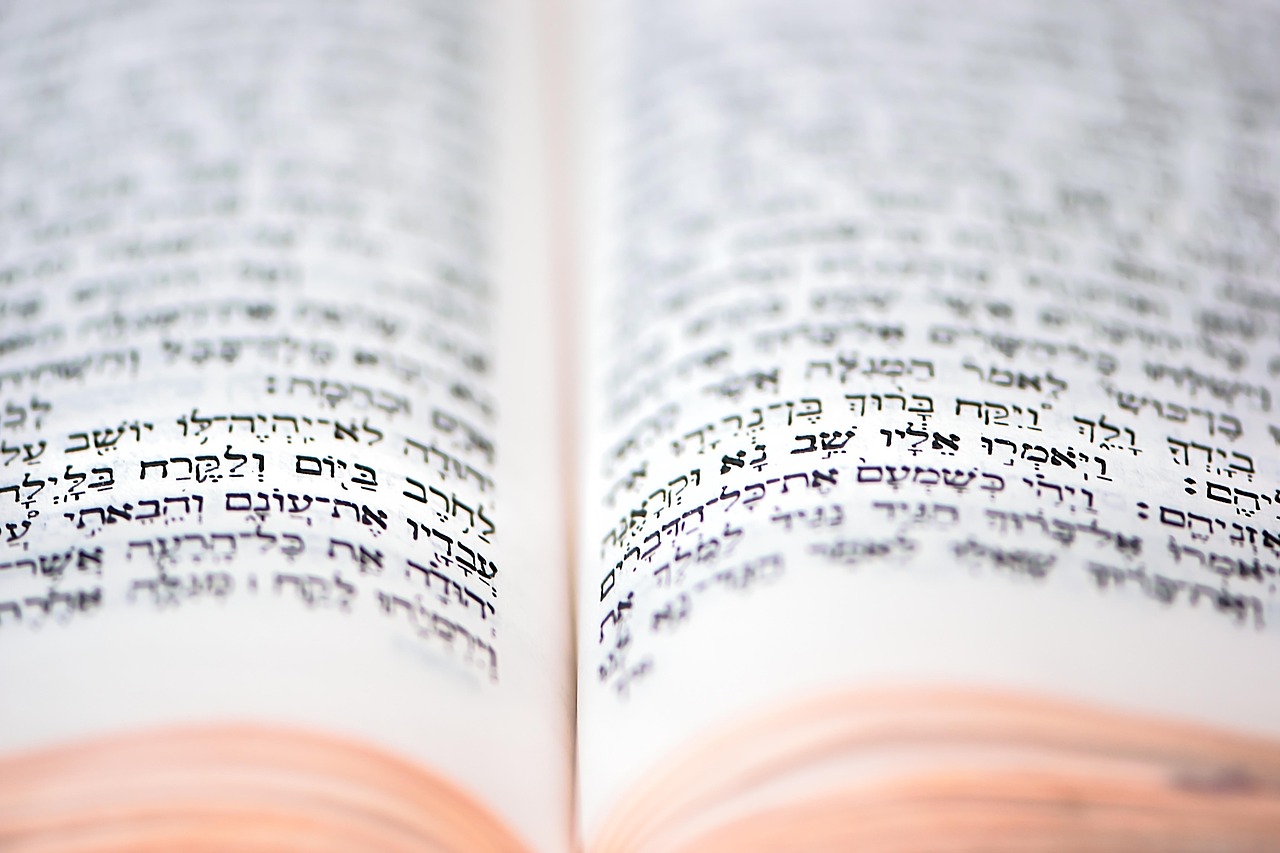A tree in Hebrew, known as “etz” (עץ), symbolizes life, growth, and stability. In Jewish tradition, trees are often associated with knowledge, nourishment, and the connection between heaven and earth.
The Significance of Trees in Hebrew Culture
Trees hold a profound place in Hebrew culture and tradition. From ancient texts to modern practices, they symbolize various aspects of life. The Hebrew Bible, known as the Tanakh, frequently references trees, establishing them as vital elements in the spiritual and physical landscape. Their presence is not only seen in nature but also in the cultural identity of the Jewish people.

In Hebrew scripture, trees are often depicted as metaphors for wisdom and growth. For instance, the Tree of Life (עץ החיים) is a significant symbol that appears in the Book of Genesis. It represents eternal life and divine wisdom. This tree is contrasted with the Tree of Knowledge of Good and Evil, which brings about human awareness and moral responsibility.
Moreover, trees are integral to various Jewish festivals and rituals. During Tu B’Shevat, the New Year for Trees, Jews celebrate nature and environmental awareness. This holiday emphasizes the importance of planting trees and caring for the earth. It serves as a reminder of humanity’s responsibility to preserve the natural world.
Types of Trees in Hebrew Tradition
Different types of trees carry unique meanings in Hebrew culture. Here are some notable examples:

| Tree | Hebrew Name | Symbolism |
|---|---|---|
| Olive Tree | זית (Zayit) | Peace and prosperity |
| Palm Tree | תמר (Tamar) | Victory and righteousness |
| Fig Tree | שקד (Shakad) | Fruitfulness and abundance |
| Cedar Tree | ארז (Erez) | Strength and resilience |
Each tree not only enriches the landscape but also serves as a symbol that resonates with the values and beliefs of the Jewish faith. For instance, the olive tree is often associated with peace, representing the hope for harmony among nations. The palm tree, on the other hand, signifies victory and righteousness, often referenced during celebrations like Sukkot.
The Tree of Life in Kabbalah
In Kabbalah, a mystical aspect of Judaism, the Tree of Life is a crucial concept. It represents the structure of creation and the path to spiritual enlightenment. The Tree consists of ten interconnected spheres (Sefirot), each representing different attributes of God. These spheres guide individuals on their spiritual journey.
The Tree of Life illustrates how one can ascend toward divine understanding through various stages. Each sphere corresponds to specific qualities, such as wisdom, understanding, and compassion. This intricate symbolism reflects not just a philosophical framework but a way to comprehend the universe’s complexities through a spiritual lens.

Modern Interpretations of Trees in Hebrew Context
Today, trees continue to play a significant role in Israeli culture and environmental efforts. Initiatives to plant trees aim at combating desertification and promoting ecological balance. The government and various organizations encourage reforestation projects that connect people with nature.
This modern relationship with trees echoes ancient traditions while addressing contemporary challenges. Community gatherings often revolve around tree-planting events, fostering a sense of unity and shared purpose. Through these actions, trees remain a symbol of hope, growth, and resilience in both personal and collective contexts.
Symbolism of Trees in Jewish Literature
Trees are prominently featured in Jewish literature, particularly in the Torah and various religious texts. Their symbolism extends beyond mere physical presence. They embody ideals and teachings that resonate through generations. This rich tapestry of meaning elevates trees to a central place in Jewish thought.
In the Torah, trees are often associated with pivotal moments and moral lessons. For example, the Garden of Eden, which is home to the Tree of Life and the Tree of Knowledge, serves as a foundational narrative about humanity’s choices. This story illustrates the consequences of free will and the quest for understanding.

Metaphorical Interpretations
Various Jewish scholars and commentators have interpreted trees metaphorically. Here are some common interpretations:
- Life and Growth: Trees symbolize the growth of individuals and communities. Just as trees grow from small seeds into towering giants, people also develop through experiences.
- Wisdom: The pursuit of knowledge is often likened to climbing a tree. Each branch represents different paths of learning and understanding.
- Connection: Trees connect heaven and earth, representing the link between the divine and human experience. They remind us of our responsibility to nurture both our spiritual and physical worlds.
Impact on Jewish Festivals
Trees play a significant role in Jewish festivals, enhancing their spiritual significance. During various celebrations, rituals involving trees highlight their importance in Jewish culture.
Here are a few festivals where trees are central:
- Tu B’Shevat: Known as the New Year for Trees, this festival encourages planting and caring for trees. It is a time to reflect on nature and its blessings.
- Sukkot: During this harvest festival, the Four Species (Etrog, Lulav, Hadas, and Aravah) include plants that represent different trees, emphasizing gratitude for nature’s bounty.
- Shavuot: This holiday celebrates the giving of the Torah. In some traditions, it involves decorating homes with flowers and branches, symbolizing the beauty of God’s creation.
Ecological Significance of Trees in Israel
The ecological importance of trees in Israel cannot be overstated. As a country characterized by diverse landscapes, trees contribute significantly to environmental health. Forests and greenery help combat climate change and preserve biodiversity.
In recent years, Israel has undertaken numerous initiatives to enhance its forested areas. These projects not only focus on planting new trees but also on maintaining existing ones. The following are some key aspects of tree conservation efforts:
- Reforestation Projects: Various organizations work toward restoring forests that have been damaged by urbanization or natural events.
- Community Involvement: Local communities often participate in tree planting days, fostering a sense of belonging and stewardship towards the environment.
- Educational Programs: Schools incorporate environmental education to instill a sense of responsibility among young generations regarding tree preservation.
The Role of Trees in Urban Areas
Trees also have an essential role in urban settings. In cities like Jerusalem and Tel Aviv, urban forestry provides numerous benefits:
- Air Quality Improvement: Trees absorb pollutants and release oxygen, contributing to cleaner air.
- Temperature Regulation: Urban trees provide shade, helping to reduce heat in densely populated areas.
- Aesthetic Value: Green spaces enhance the beauty of cities, making them more inviting for residents and tourists alike.
Cultural Expressions Related to Trees
Trees have inspired various forms of cultural expression in Hebrew literature and art. Poets, writers, and artists often draw upon the imagery of trees to convey deep emotions or philosophical ideas. The symbolism associated with trees can be seen across different mediums.
For instance, poetry often reflects themes such as growth, resilience, and connection to nature. Artists depict trees in paintings that explore their beauty or use them as metaphors for human experiences. This cultural integration emphasizes the enduring significance of trees in Hebrew tradition.
In conclusion, trees are not merely elements of nature but rather symbols rich with meaning across various facets of Hebrew culture. Their presence continues to shape spiritual beliefs, ecological practices, and artistic expressions.
Spiritual and Mystical Dimensions of Trees
In Hebrew tradition, trees are not only viewed as physical entities but also as spiritual symbols with deep mystical meanings. They embody various teachings and concepts that transcend the material world. The Kabbalistic interpretation of trees highlights their significance in understanding the divine and the cosmos.
The Tree of Life in Kabbalah
The Tree of Life, or “Etz Chaim,” is a central symbol in Kabbalistic thought. It represents the structure of creation and the pathways to spiritual enlightenment. Each of the ten Sefirot in this tree serves as a connection point between God and humanity, allowing individuals to navigate their spiritual journeys.
The Sefirot are often described as attributes or emanations of God. They illustrate how divine energy flows from the infinite to the finite world. Here is a brief overview of the Sefirot and their meanings:
| Sefirah | Meaning | Corresponding Attribute |
|---|---|---|
| Keter | Crown | Divine Will |
| Chokhmah | Wisdom | Intuitive Insight |
| Binah | Understanding | Analytical Thought |
| Chesed | Kindness | Loving Kindness |
| Gevurah | Severity | Judgment |
| Tiferet | Beauty | Harmony |
| Netzach | Eternity | Victory |
| Hod | Glory | Sincerity |
| Yesod | Foundation | Connection |
| Malchut | Kingdom | Manifestation |
This structure illustrates how individuals can attain spiritual ascent by engaging with each Sefirah. The Tree of Life serves as a guide for understanding oneself and one’s relationship with the divine, highlighting the interconnectedness of all existence.
Trees in Hebrew Folklore and Mythology
Trees also appear in various folklore and mythological narratives within Hebrew tradition. They are often depicted as living entities with their own wisdom and characteristics. Many stories tell how trees play essential roles in teaching lessons or guiding individuals on their paths.
The Legend of the Cedar Tree
The cedar tree is significant in Hebrew folklore, often associated with strength and resilience. One popular legend tells of how the cedar tree was chosen by God to build the First Temple in Jerusalem. Its majestic stature symbolizes the enduring nature of faith and community.
This legend highlights several themes:
- The Importance of Community: Just as a cedar tree stands tall and strong, so does a united community thrive together.
- A Legacy of Faith: The cedar tree represents a connection to spiritual heritage and continuity.
- Resilience in Adversity: The strength of the cedar serves as a reminder to remain steadfast during challenging times.
The Weeping Willow: A Symbol of Mourning
The weeping willow also holds a special place in Hebrew culture, particularly associated with mourning and remembrance. Its drooping branches evoke a sense of sorrow, making it a fitting symbol for those who grieve.
This tree is often referenced during times of remembrance, such as Yom Kippur or during memorial services. Its presence serves as a visual reminder of loss, yet it also embodies hope for renewal and healing. The weeping willow teaches that while grief is a natural part of life, it can also lead to personal growth.
The Role of Trees in Jewish Ethics
Trees are not only symbols but also serve as ethical reminders within Jewish teachings. The practice of caring for trees reflects broader ethical principles related to stewardship, environmental responsibility, and respect for life.
Environmental Ethics in Judaism
The Jewish concept of “Tikkun Olam,” or repairing the world, emphasizes the importance of taking care of the environment. Trees play a vital role in this ethical framework. Here are some key principles related to trees and environmental ethics:
- Caring for Nature: The act of planting and nurturing trees is seen as fulfilling divine commandments to protect creation.
- Sustainability: Jewish teachings advocate for sustainable practices that preserve resources for future generations.
- Community Responsibility: Engaging in communal tree-planting initiatives fosters a sense of shared responsibility for the environment.
This ethical perspective encourages individuals to view trees as integral parts of their spiritual and moral duties, reinforcing their significance beyond mere physical existence.
The Role of Trees in Jewish Identity
Trees also play a crucial role in shaping Jewish identity and cultural heritage. Their significance extends beyond environmental and ethical dimensions; they are woven into the very fabric of communal life and collective memory. Throughout history, trees have symbolized resilience, hope, and continuity within the Jewish community.
Many Jewish communities have adopted specific trees as symbols of their identity. For instance, the olive tree represents peace and endurance, while the pomegranate is associated with righteousness and the abundance of good deeds. These symbols serve not only as reminders of cultural heritage but also as aspirations for future generations.
Trees as Symbols of Resilience
Throughout periods of adversity, trees have stood as symbols of resilience for the Jewish people. During times of exile and hardship, the image of a tree has often represented hope and strength. The ability of trees to endure harsh conditions resonates deeply with the Jewish experience of survival and perseverance.
One notable example is the use of the olive branch as a symbol of peace. After the flood, a dove returned to Noah with an olive leaf, signifying the restoration of life and hope. This story has become a powerful metaphor for renewal, aligning closely with the Jewish narrative of resilience.
Educational Initiatives and Tree Planting
Educational initiatives that focus on trees often aim to instill a sense of responsibility towards nature among young Jews. Schools and community organizations frequently organize tree-planting events, helping students connect with their heritage while fostering environmental stewardship.
These initiatives can include:
- Workshops: Teaching children about the importance of trees and their role in the ecosystem.
- Community Events: Organizing tree-planting days that bring families together to contribute to their local environment.
- Environmental Education: Incorporating lessons on Jewish teachings related to trees and nature in school curricula.
Interfaith Perspectives on Trees
The symbolism of trees transcends cultural and religious boundaries. In many traditions, trees represent similar values: life, growth, and interconnectedness. Interfaith dialogues often highlight these shared meanings, promoting unity and mutual respect among diverse communities.
For example, in Christianity, the tree is often seen as a symbol of eternal life, much like in Judaism. The cross, viewed as a tree, represents sacrifice and redemption. Similarly, in Islam, the tree is a symbol of paradise and sustenance. This shared appreciation for trees fosters connections among different faiths, emphasizing common values that can unite us.
Final Thoughts
Trees hold a multifaceted significance within Hebrew culture, representing life, growth, wisdom, and resilience. They are deeply embedded in spiritual teachings, folklore, and ethical principles that guide Jewish life. Beyond their physical presence, trees symbolize community, identity, and responsibility towards creation.
The ongoing relationship between trees and the Jewish people illustrates a commitment to environmental stewardship and cultural heritage. Through initiatives focused on tree planting and education, future generations can continue to honor this vital connection. As symbols of hope and continuity, trees remind us of our responsibility to care for the world around us while embracing our rich traditions.
In conclusion, understanding what a tree means in Hebrew culture invites us to reflect on our own relationships with nature. It encourages us to appreciate not just the beauty of trees but also the profound lessons they impart about life, community, and our place within the greater ecosystem. As we nurture trees in our lives, we also cultivate a deeper connection to our heritage and shared humanity.
